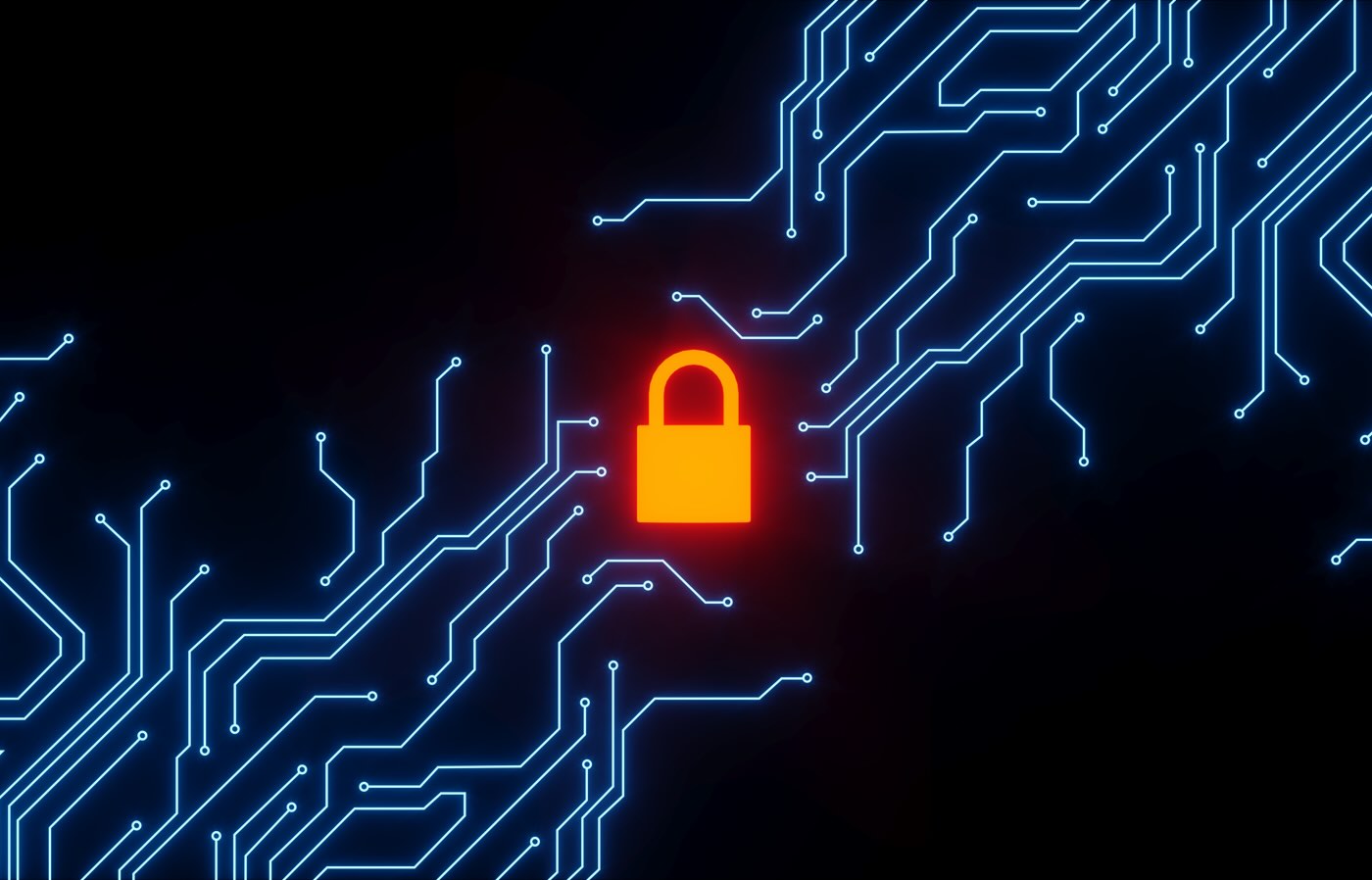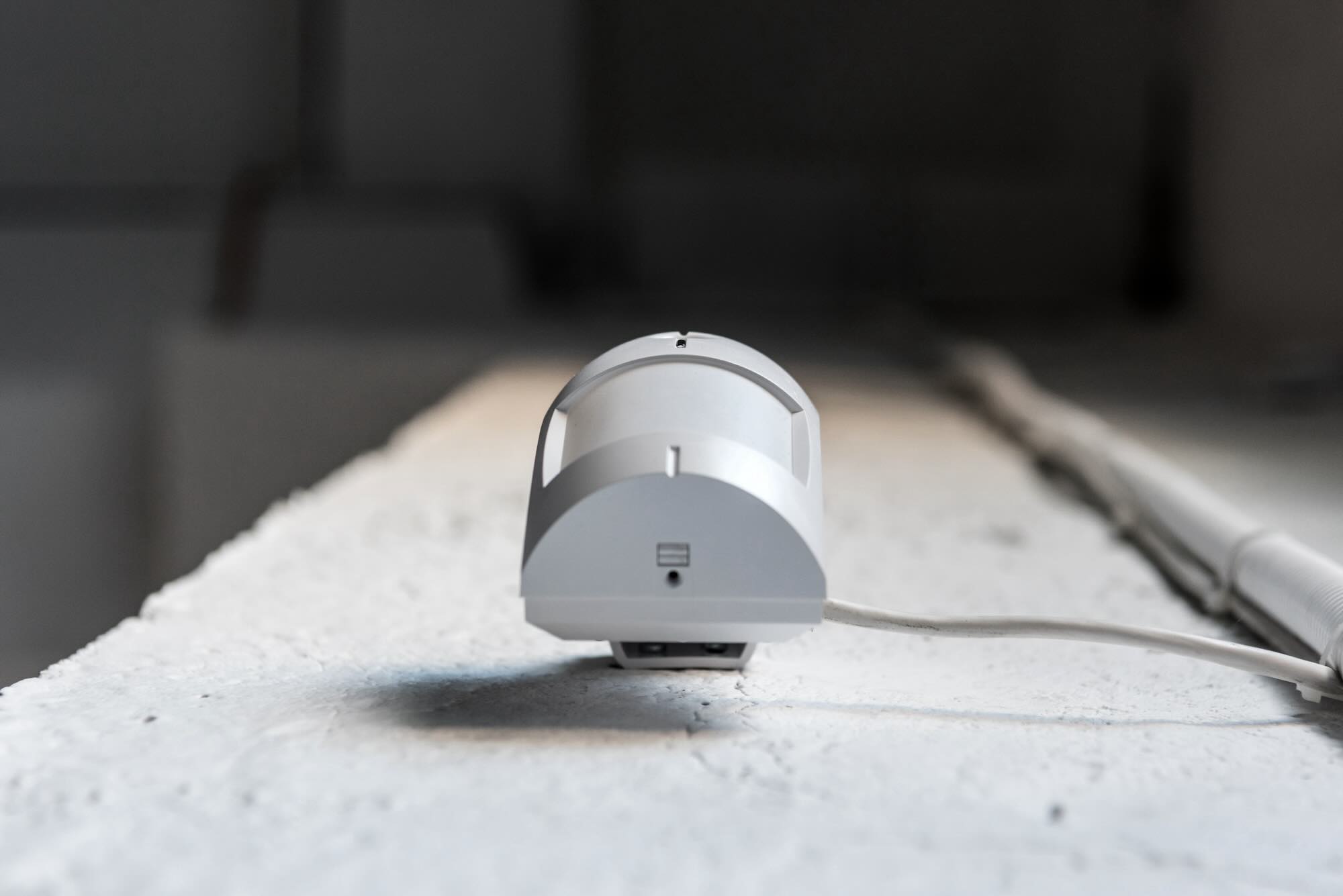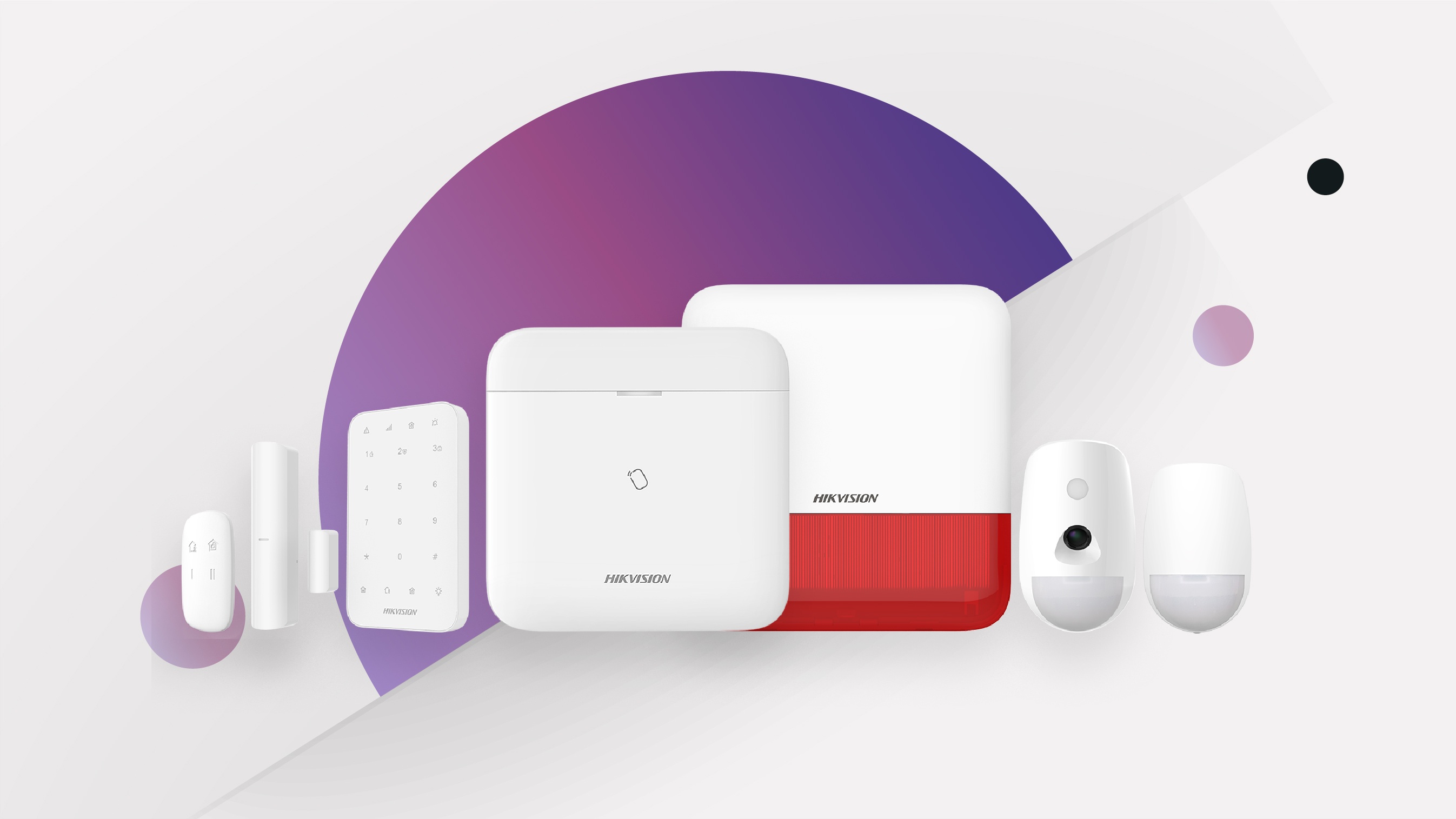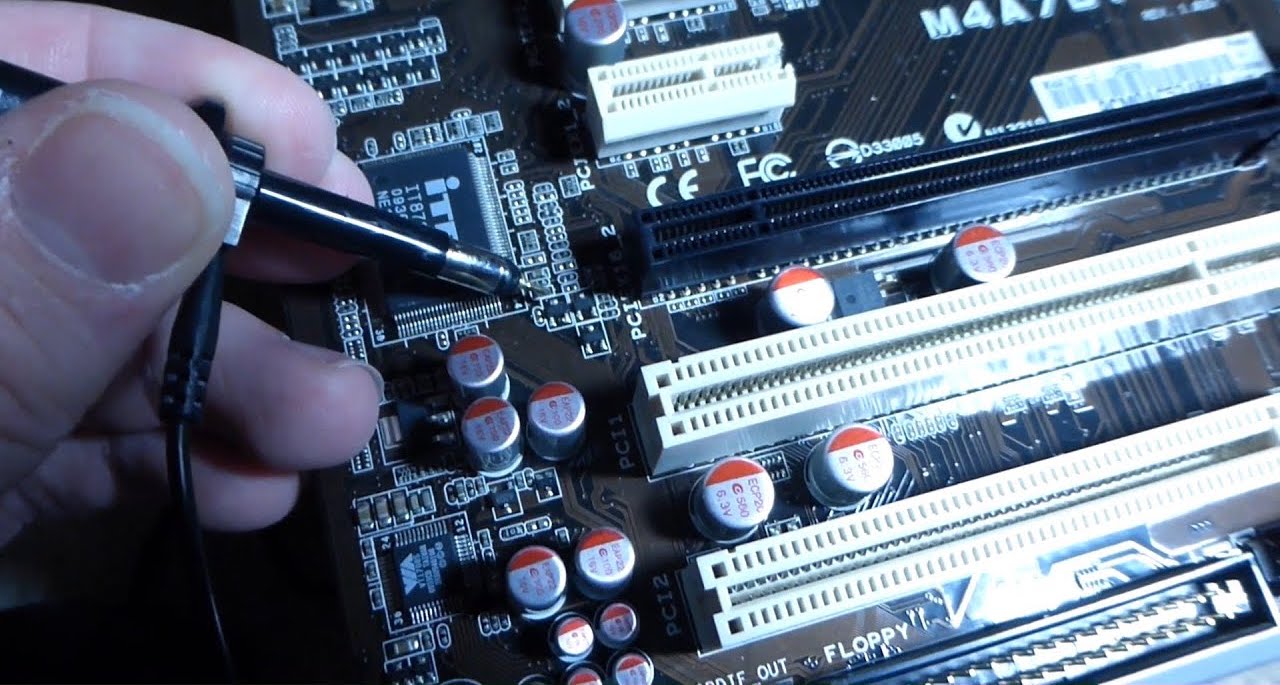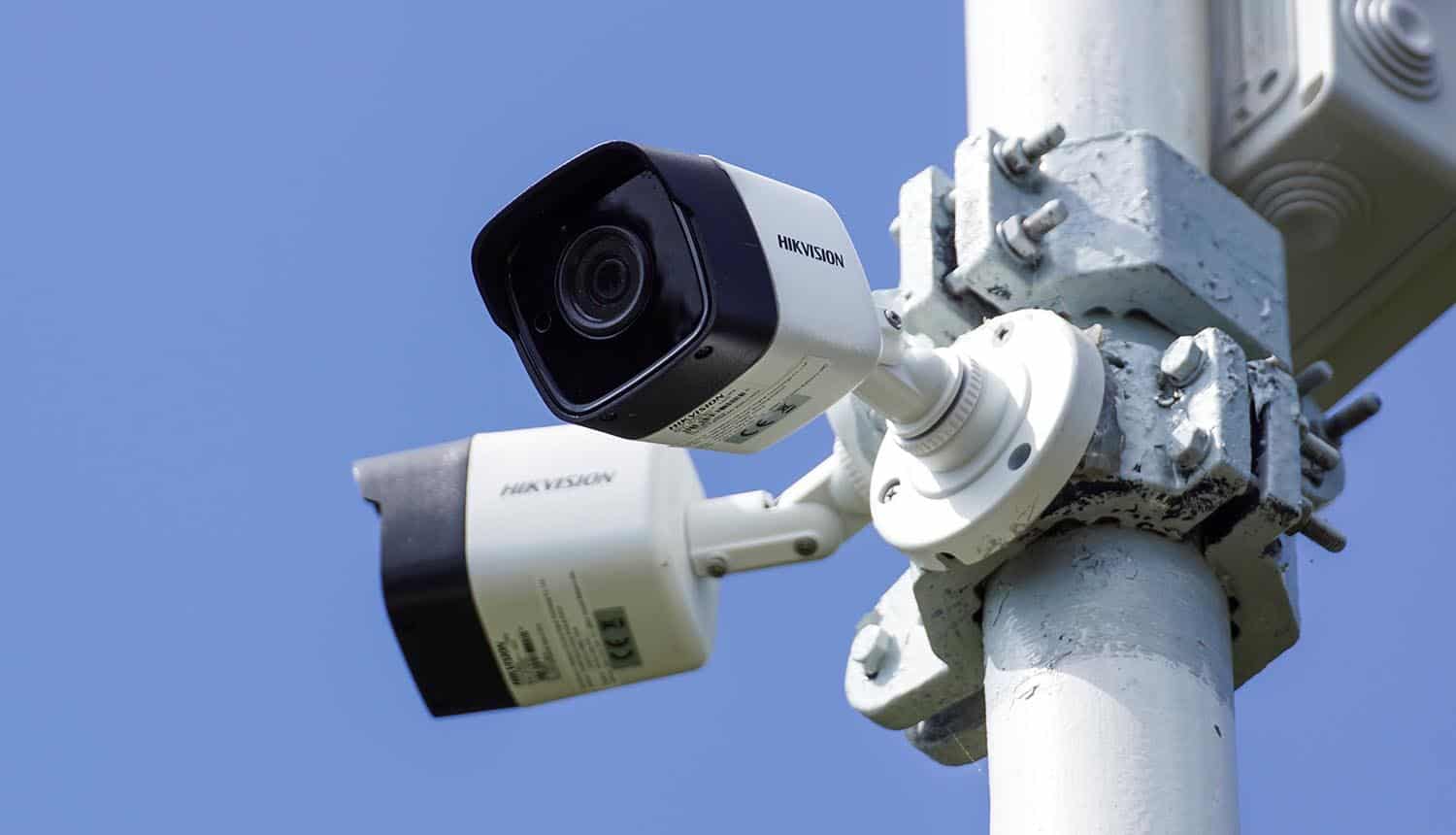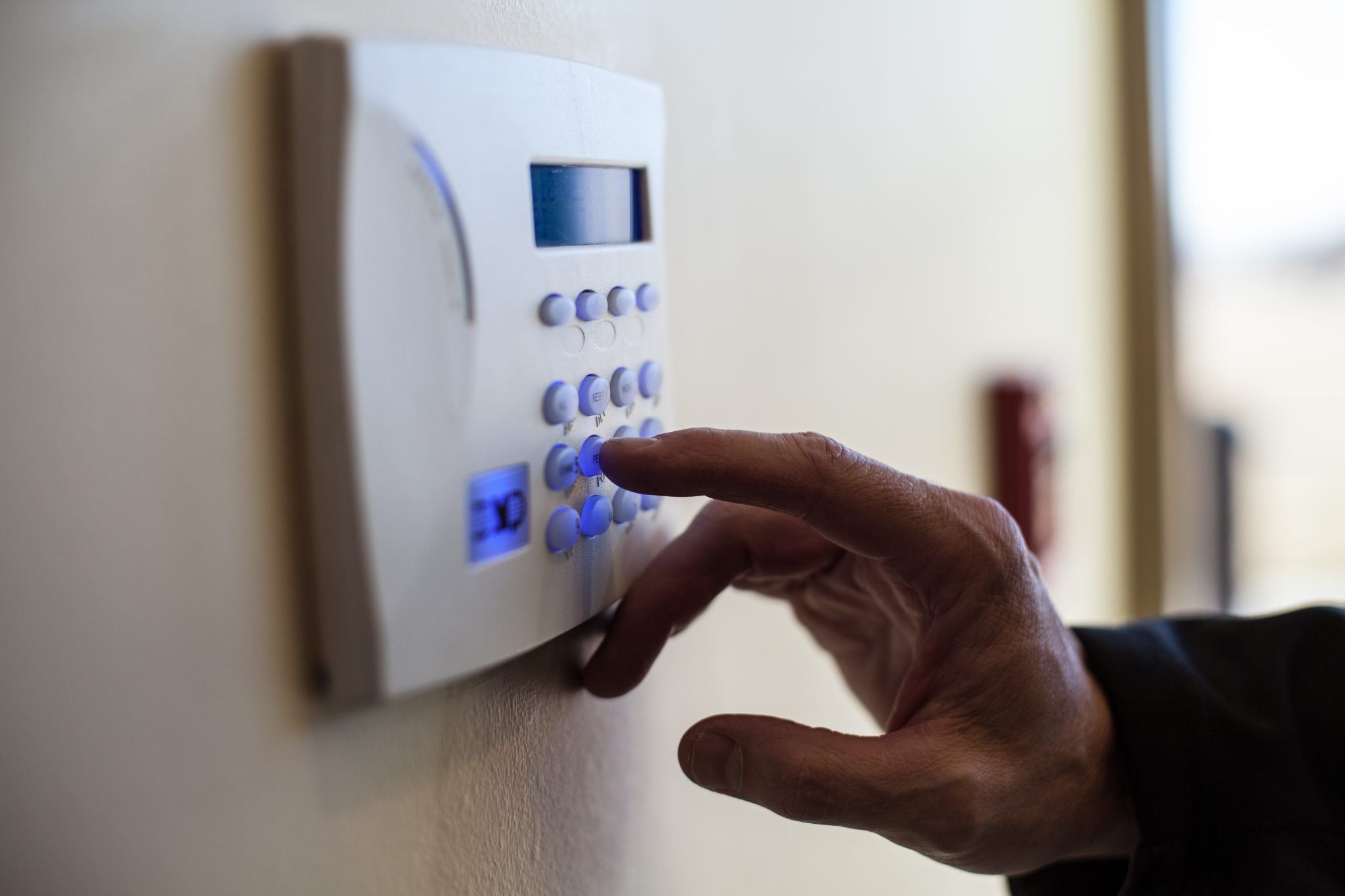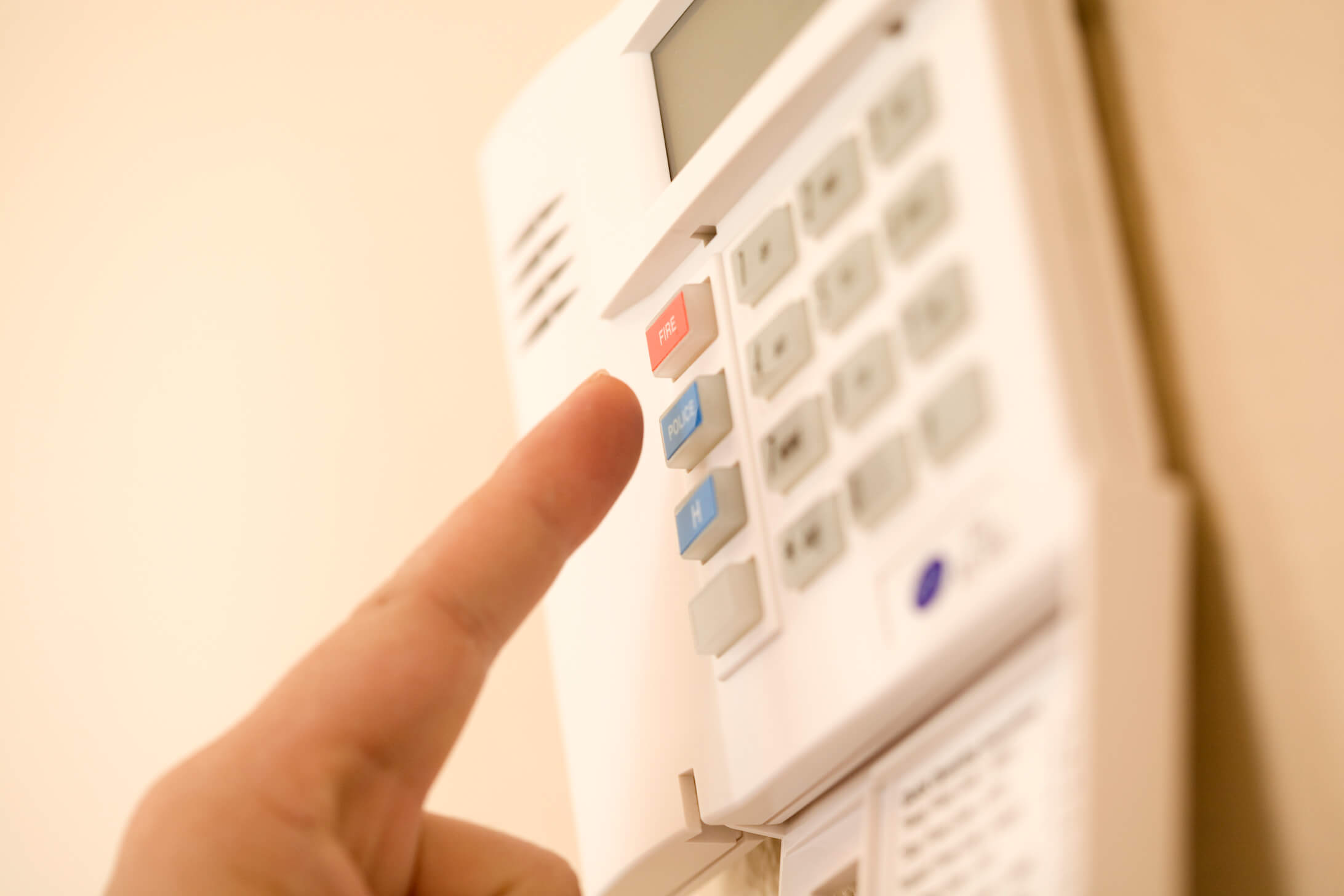Home>Home Security and Surveillance>How To Set Intrusion Detection On Ruckus


Home Security and Surveillance
How To Set Intrusion Detection On Ruckus
Modified: October 21, 2024
Learn how to set up intrusion detection on Ruckus for enhanced home security and surveillance. Protect your property with this step-by-step guide.
(Many of the links in this article redirect to a specific reviewed product. Your purchase of these products through affiliate links helps to generate commission for Storables.com, at no extra cost. Learn more)
Introduction
Welcome to the world of home security and surveillance! In this fast-paced and ever-changing digital age, it has become increasingly important to protect our homes from potential threats and intrusions. With advancements in technology, home security systems have evolved to offer enhanced protection and peace of mind.
One crucial aspect of home security is intrusion detection. Intrusion detection systems are designed to identify and alert homeowners of any unauthorized entry or suspicious activities within their premises. They act as a virtual shield, safeguarding our homes from potential burglaries and ensuring the safety of our loved ones.
In this article, we will focus on setting up and configuring intrusion detection on Ruckus, a leading name in home security and surveillance. Whether you are a tech-savvy homeowner looking to upgrade your existing security system or a novice venturing into the world of home security for the first time, we will guide you through the process step by step.
So, let’s dive in and discover the power of Ruckus intrusion detection features and learn how to set it up like a pro!
Key Takeaways:
- Setting up Ruckus intrusion detection is easy! Just connect devices, customize alerts, and test the system. Stay protected and enjoy peace of mind with Ruckus’s advanced security features.
- Be proactive in monitoring and responding to intrusion detection alerts. Review activity logs, react promptly, and contact authorities if needed. With Ruckus, your home security is in capable hands.
Read more: What Is Wireless Intrusion Detection
Understanding Intrusion Detection
Before we delve into the details of setting up intrusion detection on Ruckus, it is essential to have a clear understanding of what intrusion detection is and how it works.
Intrusion detection is a vital component of any home security system. Its primary function is to identify and alert homeowners of potential intrusions or security breaches. It does this by monitoring various aspects of your home’s security network, including entry points, motion sensors, surveillance cameras, and even smart devices connected to your home network.
There are two primary types of intrusion detection: perimeter-based and host-based. Perimeter-based intrusion detection focuses on monitoring entry points such as doors, windows, and gates. It detects any unauthorized attempts to breach these entry points and triggers an alert.
On the other hand, host-based intrusion detection operates on individual devices within your home network. It analyzes the activities and behaviors of these devices to detect any abnormal or suspicious behavior. This could include unauthorized access attempts, unusual data transfer patterns, or malicious software.
Today, intrusion detection systems utilize a combination of technologies to provide comprehensive security coverage. These may include motion sensors, video surveillance, smart locks, access control systems, and advanced algorithms that can detect anomalies in network traffic or device behavior.
When an intrusion or security breach is detected, most systems will automatically trigger an alert. This alert can be in the form of an email, push notification to your smartphone, or even a loud alarm to deter the intruder and alert you or your security service provider.
By understanding the fundamentals of intrusion detection, you can appreciate the importance of having it as part of your home security system. It acts as an extra layer of protection, providing you with the peace of mind that your home and loved ones are secure.
Now that we have a solid understanding of intrusion detection, let’s explore the features and capabilities of Ruckus’s intrusion detection system.
Ruckus Intrusion Detection Features
Ruckus is a renowned provider of home security solutions, offering a range of advanced features and capabilities in their intrusion detection system. Let’s explore some of the key features that set Ruckus apart:
- Real-time Monitoring: Ruckus intrusion detection system provides real-time monitoring of your home security network. It constantly analyzes the incoming data from various sensors and devices to detect any suspicious activity or intrusion attempts.
- Advanced Analytics: Ruckus utilizes advanced analytics to identify patterns and anomalies in network traffic and device behavior. This allows for more accurate detection of potential security threats and reduces the risk of false alarms.
- Integration with Surveillance Cameras: Ruckus seamlessly integrates with surveillance cameras, providing synchronized monitoring and recording. This allows you to have a complete view of any potential security breaches, enabling you to take immediate action if necessary.
- Customizable Alert Notifications: Ruckus lets you customize the alert notifications according to your preferences. You can choose to receive alerts via email, push notifications to your smartphone, or even set up an automated phone call to a designated number.
- Cloud-based Management: Ruckus offers cloud-based management of your intrusion detection system. This allows you to access and control your security network from anywhere, using a smartphone, tablet, or computer.
- User-friendly Interface: Ruckus provides an intuitive and user-friendly interface, making it easy for homeowners to set up and configure their intrusion detection system. Even if you are new to home security, you can navigate the interface effortlessly and make changes as needed.
- Scalability: Ruckus intrusion detection system is highly scalable, allowing you to expand your security network as your needs grow. Whether you have a small apartment or a large property, Ruckus can accommodate your requirements.
- 24/7 Technical Support: Ruckus provides 24/7 technical support to assist you with any issues or queries you may have. Their team of experts is just a phone call or email away, ensuring that you receive prompt assistance whenever you need it.
These are just a few of the exceptional features offered by Ruckus intrusion detection system. With their cutting-edge technology and commitment to customer satisfaction, Ruckus ensures that your home security is in capable hands.
Now that we’re familiar with the features of Ruckus’s intrusion detection system, let’s move on to the next step: setting up intrusion detection on your Ruckus system.
Setting Up Intrusion Detection on Ruckus
Setting up intrusion detection on your Ruckus system is a straightforward process. Here’s a step-by-step guide to help you get started:
- Assess Your Security Needs: Before setting up intrusion detection, assess your specific security requirements. Determine the areas you want to monitor, such as entry points, outdoor spaces, or specific rooms, and identify the devices you need to connect to your Ruckus system.
- Connect and Power On Devices: Connect the Ruckus devices, such as motion sensors, surveillance cameras, and smart locks, according to the manufacturer’s instructions. Ensure that they are properly powered on and connected to your home network.
- Access Ruckus Management Interface: Open your web browser and enter the IP address of your Ruckus management interface. This will allow you to access the settings and configuration options for your Ruckus system.
- Navigate to Intrusion Detection Settings: Once you are logged into the Ruckus management interface, navigate to the intrusion detection settings. This is where you can enable and configure the intrusion detection features.
- Create Intrusion Detection Policies: Ruckus allows you to create customized intrusion detection policies based on your specific security needs. Define the parameters for triggering alerts, such as motion detection sensitivity, entry point monitoring, and device behavior analysis.
- Set Alert Notifications: Configure the alert notifications according to your preferences. Choose the preferred method of notification, such as email, push notification, or automated phone call, and specify the contact details to receive the alerts.
- Test the System: Once you have set up the intrusion detection policies and alert notifications, it is essential to test the system to ensure it is functioning correctly. Trigger various scenarios, such as opening a monitored door or testing the motion detection feature, to verify that the system detects and alerts you accordingly.
By following these steps, you can successfully set up intrusion detection on your Ruckus system and start protecting your home from potential security threats. However, keep in mind that it’s always a good idea to refer to the Ruckus user manual or consult their technical support if you encounter any difficulties during the setup process.
Now that you have configured intrusion detection on your Ruckus system, let’s move on to the next important aspect: configuring intrusion detection policies to meet your specific security requirements.
Configuring Intrusion Detection Policies
Configuring intrusion detection policies is a crucial step in optimizing the effectiveness of your Ruckus system. By customizing these policies, you can tailor the intrusion detection settings to meet your specific security requirements. Here are the key steps to configure intrusion detection policies:
- Assess Your Security Needs: Before configuring policies, identify the areas or devices that require specific security settings. For example, you may want to set higher sensitivity levels for motion detection in high-traffic areas or enable device behavior analysis for specific smart devices.
- Access the Ruckus Management Interface: Log into the Ruckus management interface using your credentials. Navigate to the intrusion detection settings section to access the policy configuration options.
- Create Policy Profiles: Ruckus allows you to create multiple policy profiles based on your security needs. Each profile can have its own set of parameters and rules. For instance, you can create a profile for outdoor surveillance with specific motion detection settings and another profile for indoor monitoring with different rules.
- Adjust Motion Detection Sensitivity: Fine-tune the motion detection sensitivity levels based on your preferences. Higher sensitivity may result in more frequent alerts, while lower sensitivity could potentially miss some events. Strike a balance that suits your requirements.
- Define Entry Points: Specify the entry points that need monitoring, such as doors, windows, or vulnerable areas. Create rules to trigger alerts when these entry points are breached or when unauthorized access attempts are detected.
- Analyze Device Behavior: If your Ruckus system supports device behavior analysis, configure the parameters to detect any unusual or suspicious device activities. This can include unexpected data transfer patterns, unauthorized device connections, or abnormal device behavior.
- Enable/Disable Specific Features: Ruckus provides flexibility in enabling or disabling specific features based on your requirements. For example, you can choose to enable or disable email notifications, push notifications, or automated phone calls for different events or scenarios.
- Save and Apply Changes: Once you have configured the intrusion detection policies to your satisfaction, save the changes and apply them to your Ruckus system. Ensure that the policies are activated and functioning as per your desired settings.
By taking the time to configure intrusion detection policies according to your specific security needs, you can enhance the accuracy and efficiency of your Ruckus system. Regularly review and update these policies as your security requirements evolve or new threats emerge.
Now that you have configured intrusion detection policies, the next step is to enable and disable intrusion detection on your Ruckus system as needed. Let’s explore how to do that in the following section.
Make sure to enable intrusion detection on your Ruckus network by accessing the web interface and navigating to the security settings. Enable the intrusion detection feature and customize the settings to fit your network’s needs.
Enabling and Disabling Intrusion Detection
Enabling and disabling intrusion detection on your Ruckus system gives you the flexibility to control when and how your system monitors for potential security threats. Here’s how you can enable or disable intrusion detection as needed:
- Access the Ruckus Management Interface: Log into the Ruckus management interface using your credentials. Navigate to the intrusion detection settings section to access the enable/disable options.
- Enable Intrusion Detection: To enable intrusion detection, simply toggle the switch or checkbox to the “On” position. This will activate the intrusion detection features and start monitoring for potential security threats.
- Disable Intrusion Detection: If you need to disable intrusion detection temporarily, toggle the switch or checkbox to the “Off” position. This will suspend the intrusion detection features and stop monitoring for security threats. However, it is important to note that disabling intrusion detection for an extended period of time can leave your home vulnerable to potential intrusions, so use this feature with caution.
- Configure Schedule-based Activation: Some Ruckus systems offer the option to configure intrusion detection based on a schedule. This allows you to specify certain time periods during which intrusion detection is automatically enabled or disabled. For example, you may want to enable intrusion detection during nighttime hours when you are away from home and disable it during the day when there is usually regular activity.
- Save and Apply Changes: After enabling or disabling intrusion detection or configuring schedule-based activation, save the changes and apply them to your Ruckus system. Ensure that the changes are reflected in the system and that intrusion detection is functioning according to your desired settings.
By having the ability to enable or disable intrusion detection on your Ruckus system, you can adapt the monitoring capabilities to suit your specific needs. This is particularly useful if you have trusted individuals, such as family members or pet sitters, accessing your home during certain periods, where you may choose to temporarily disable intrusion detection.
Now that you know how to enable and disable intrusion detection, let’s move on to the next step: monitoring and responding to intrusion detection alerts.
Monitoring Intrusion Detection Alerts
Monitoring intrusion detection alerts is a crucial part of ensuring the effectiveness of your Ruckus security system. When an intrusion or security breach is detected, you need to be promptly informed so that you can take appropriate action. Here’s how you can monitor intrusion detection alerts:
- Configure Alert Notifications: Ensure that you have set up the alert notifications according to your preferences. Choose the method of notification, such as email, push notification, or automated phone call, and specify the contact details to receive the alerts.
- Keep Devices at Hand: Make sure that the devices, such as smartphones or tablets, through which you receive the alerts are easily accessible. Keep them charged and within your reach so that you can respond quickly to any intrusion detection alerts.
- React Promptly: When you receive an intrusion detection alert, react promptly according to the severity of the situation. If you are certain it is a false alarm or a harmless event, you can dismiss the alert. However, if the alert indicates a potential security threat, take appropriate action immediately.
- Review Video Footage: If your Ruckus system is integrated with surveillance cameras, review the corresponding video footage when an intrusion detection alert is triggered. This can provide valuable insights into the nature and severity of the event, helping you make informed decisions on how to respond.
- Contact Authorities if Necessary: If the intrusion detection alert indicates a serious security breach or immediate threat, contact the relevant authorities, such as the police or your security service provider. Provide them with the necessary information, including the nature of the alert and any supporting evidence.
- Regularly Monitor Activity Logs: It’s essential to regularly review the activity logs provided by your Ruckus system. These logs can give you a comprehensive overview of all intrusion detection events and activities, allowing you to identify patterns or recurring issues that may require further investigation or adjustments to your security system.
By actively monitoring intrusion detection alerts and responding promptly, you can ensure the safety and security of your home and loved ones. Regularly reviewing activity logs can also help you identify any potential vulnerabilities in your security system and take proactive steps to address them.
Now that we’ve covered how to monitor intrusion detection alerts, let’s address the potential troubleshooting issues you may encounter with intrusion detection on your Ruckus system.
Troubleshooting Intrusion Detection Issues
While Ruckus intrusion detection system is designed to provide reliable security monitoring, you may occasionally encounter issues that require troubleshooting. Here are some common problems you may encounter with intrusion detection and the corresponding troubleshooting steps:
- False Alarms: One of the most common issues with intrusion detection is false alarms. This can be caused by factors such as misconfiguration, environmental conditions, or interference. To troubleshoot false alarms, review your intrusion detection policies and adjust the sensitivity levels. Additionally, check for any environmental factors that may trigger false alarms, such as pets or moving objects near motion sensors.
- Interference: Interference from other devices or wireless signals can disrupt the functioning of your intrusion detection system. Ensure that your Ruckus devices are placed away from sources of interference, such as Wi-Fi routers or cordless phones. Additionally, check for any wireless signal conflicts and adjust the frequencies or channels as needed.
- Device Connectivity Issues: If you experience connectivity issues with your Ruckus devices, make sure they are properly powered on and connected to your home network. Check the device settings and ensure that they are configured correctly. If the issue persists, try restarting the devices and refreshing the connection.
- System Updates: Regular system updates are essential to keep your Ruckus intrusion detection system functioning optimally. Check for any available firmware or software updates for your devices and ensure they are up to date. These updates often include bug fixes and performance improvements that can resolve any issues you may be experiencing.
- Technical Support: If you have followed the troubleshooting steps above and are still encountering issues with intrusion detection, it may be necessary to contact Ruckus technical support. They can provide further guidance and assistance in resolving any specific issues or concerns you may have.
Remember, troubleshooting intrusion detection issues requires patience and methodical evaluation. By systematically addressing the potential causes of the problem, you can ensure that your Ruckus system is operating at its full potential and providing the security and peace of mind you desire.
Now that we’ve covered troubleshooting, let’s wrap up our discussion.
Conclusion
Setting up a robust intrusion detection system is paramount in ensuring the security and safety of your home. With Ruckus, you have access to advanced features and capabilities that can significantly enhance your home security and surveillance.
In this article, we’ve explored the fundamentals of intrusion detection and how it works. We’ve also discussed the exceptional features provided by Ruckus, including real-time monitoring, advanced analytics, integration with surveillance cameras, customizable alerts, cloud-based management, user-friendly interface, scalability, and 24/7 technical support.
We’ve walked you through the process of setting up intrusion detection on your Ruckus system, including assessing your security needs, connecting and powering on devices, accessing the management interface, configuring intrusion detection policies, and enabling or disabling intrusion detection based on your preferences.
Furthermore, we’ve provided insights into monitoring intrusion detection alerts, such as configuring alert notifications, reacting promptly to alerts, reviewing video footage, and contacting authorities if needed. We’ve also discussed the importance of regularly monitoring activity logs to identify any potential vulnerabilities and make necessary adjustments to your security system.
Lastly, we addressed troubleshooting common issues that may arise with intrusion detection, including false alarms, interference, device connectivity issues, and the significance of system updates. We emphasized the importance of seeking technical support when needed to ensure the optimal performance of your Ruckus system.
By following the steps and guidelines outlined in this article, you can set up and optimize intrusion detection on your Ruckus system, and enjoy the peace of mind that comes with knowing that your home is protected against potential security threats.
Remember, home security is an ongoing process, and it’s essential to stay informed about the latest advancements in intrusion detection technology and continuously assess and update your security measures. With Ruckus at your side, you are equipped with a reliable and advanced solution for home security and surveillance.
Protect your home, safeguard your loved ones, and create a secure environment with Ruckus intrusion detection.
Frequently Asked Questions about How To Set Intrusion Detection On Ruckus
Was this page helpful?
At Storables.com, we guarantee accurate and reliable information. Our content, validated by Expert Board Contributors, is crafted following stringent Editorial Policies. We're committed to providing you with well-researched, expert-backed insights for all your informational needs.
